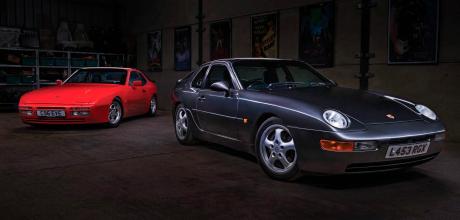Transaxles sporting life - Porsche 968 Sport and restored 944 Turbo
Blessed with two standout models from Porsche’s transaxle family of cars, 911 & Porsche World editor, Dan Furr, finds each of this powerful pairing offers a very different driving experience...
Words Dan Furr
Photography Dan Sherwood
DAN FURR 944 TURBO, 968 SPORT, 997 C4S
SPORTING LIFE
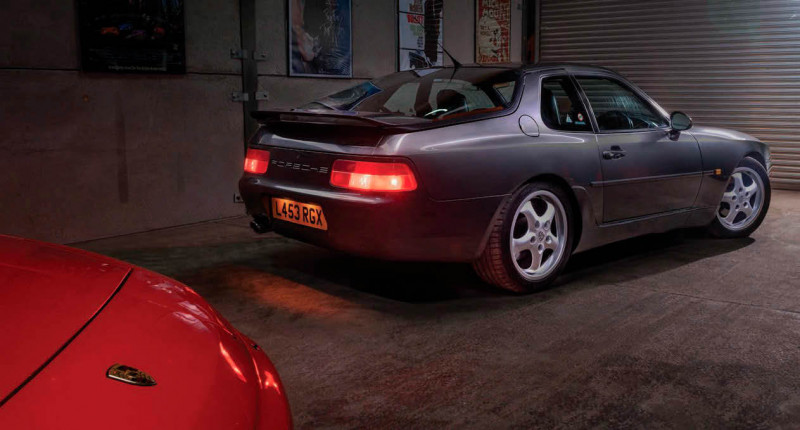
If you’ve been around enthusiast-owned vehicles long enough, you’ll have heard someone say “cars find me” when describing how they’ve come by the four-wheeler (s) on their driveway.
It’s easy to dismiss such a claim, but I’m living proof it holds true — though I actively went on the hunt for a 997 Carrera 4S, both my 1994 968 Sport and 1986 944 Turbo found me, so to speak. Allow me to explain.
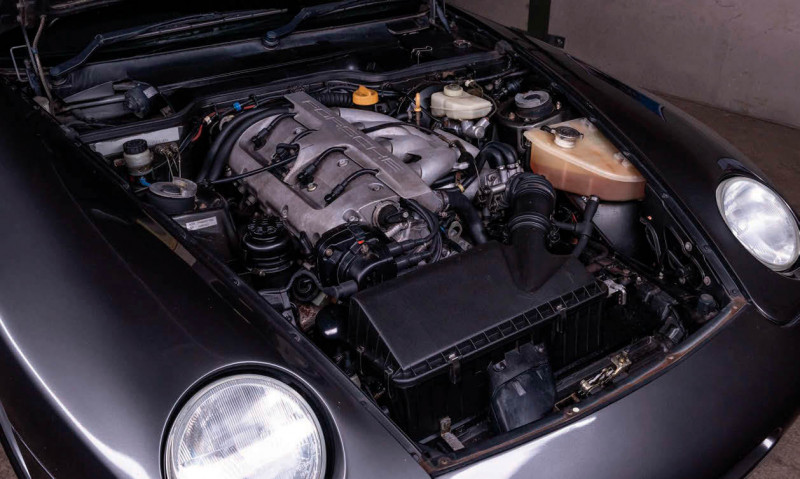
Let’s start with the 968. This is the most recent addition to Furr’s Fleet, which now stands at fifteen cars spanning a wide variety of makes and models, from a Rolls-Royce Silver Shadow II to an ex-works British Touring Car Championship Super Touring Vauxhall Cavalier GSi. As was the case with my 997 (which you can read about later in this issue of 911 & Porsche World), when it came to buying most of the cars I own, I searched high and low until I found what I was looking for. In contrast, the 968 arrived at my door unannounced. I’m not talking figuratively.
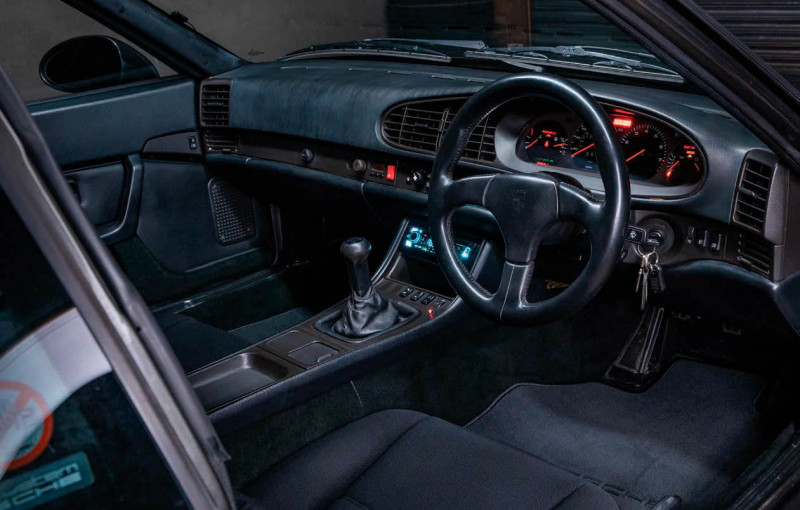
It was June 2021. I was busy tinkering in my workshop when the car pulled into view. Its occupants, two brothers, were struggling to find a neighbouring business. I offered directions, but before my new friends and I parted company, we got to chatting about the Porsche.
Naturally, I was excited to witness such a rare model on my doorstep, not to mention the fact this was the first time I’d seen a Slate Grey example of a 968 variant I’d long wanted to keep in my garage. My visitors explained how the car belonged to their father. Remarkably, he was the second owner and had been in possession of the three-litre coupe since 1997. A quarter-century of continuous custody is exceptional, and it wasn’t long until I was being told stories of holidays, European road trips and other outings the family had enjoyed in the car over many years. With regular use, however, comes wear and tear — the Sport-specific upholstery was in need of a retrim, the car’s Cup 2 wheels had seen better days and, thanks to vastly reduced mileage in recent years, not least due to the UK’s coronavirus lockdowns, the mechanicals required a refresh.
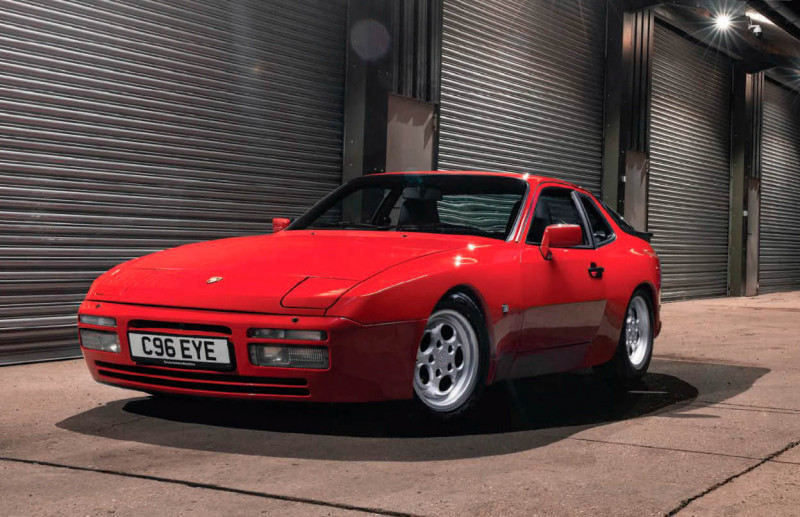
Like so many classic and modern-classic Porsches, this Sport had long been removed from daily driving duties and was now being kept as a cherished chariot. Consequently, when the government announced it was safe for us all to head back into the wild, the 968’s owner asked his sons to arrange a retrim, the necessary spanner work, wheel refurbishment, the purchase of premium tyres and to take care of anything else they felt required attention. They’d arrange the work, he’d foot the bill.
DUE TO THE SCALE OF WORK REQUIRED TO GET THE CAR TO THE CONDITION SEEN HERE, THE RESTORATION WAS A DRAWNOUT AFFAIR, BUT WELL WORTH THE WAIT
As much as I enjoyed chatting about the car, the brothers were running late for their appointment and needed to leave, but before they vacated my workshop (where they had a good look at my 944 Turbo), I suggested they get in touch if their dad ever wanted to part with his Porsche. We exchanged numbers, said goodbye, and that, so I thought, was that. Two months later, however, I encountered the car once again. I was visiting Cambridgeshire-based premium vehicle interior trimming outfit, Awesome Classic & Custom, where the 968 was being worked on. Its seats — very tired when I first saw them — were being recovered in super-rare OEM Sport fabric.
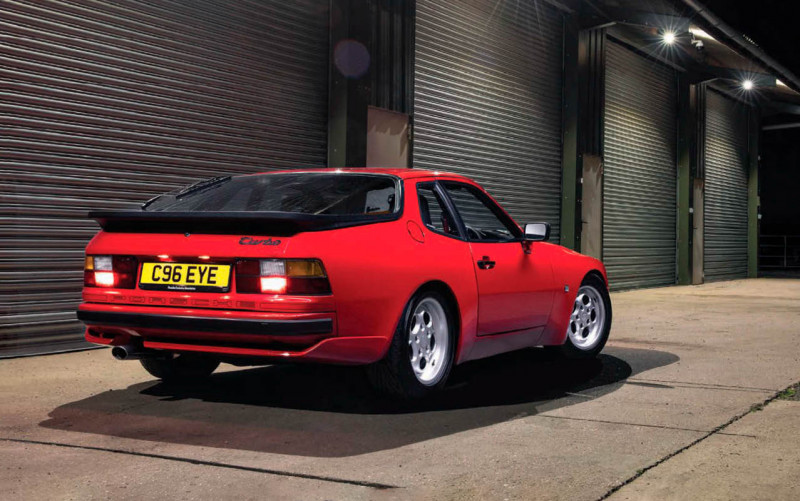
The worn centre cloth and bolsters were being transformed into a condition as good as new. Fresh carpets were going in, as was a new leather handbrake cover. To all intents and purposes, save for a busted LCD clock, the cabin was on its way to becoming as pleasing as it was when the car’s first and only other owner took delivery from Porsche Centre Exeter on 27th June 1994.
COST OF A SPORT IS APPROXIMATELY HALF WHAT YOU’LL PAY FOR A CLUB SPORT, MAKING IT AN EVEN BETTER BUY TODAY THAN IT WAS IN PERIOD
I knew awesome Awesome crew would do a stellar job — after enjoying seat time in a number of 911 & Porsche World feature car cabins trimmed by the firm’s talented team, I had no hesitation in commissioning the company to completely overhaul my 944 Turbo’s cockpit back in 2018. I’ll talk more about this shortly, suffice to say, it was clear to me this 968 Sport was in safe hands.
A month prior to landing at Awesome HQ, the car was left with Wellingborough-situated Porsche indie, DW Performance, where it was treated to a major service, replacement of all belts, a new balance shaft oil seal, front shock absorber top mounts and bump stops and an MOT. Additionally, the brakes were renewed, new genuine lights and side repeaters were fitted, plus the car’s Cup 2 wheels were professionally refurbished before being wrapped in Michelin Pilot Sport 4 rubber.
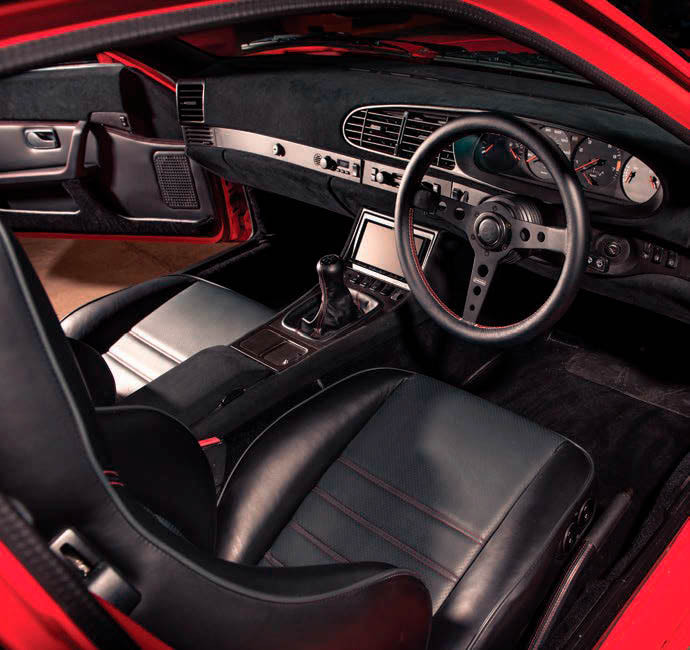
Now, if you invite a stranger to contact you in the hope that at some point in the future they might be interested in selling a car they show no sign of wanting to part with, you’d be daft to expect a call. With this in mind, you can imagine my surprise when I was contacted out of the blue in summer 2022 with an invitation to take ownership of the very 968 randomly attending my workshop more than a year earlier. So the story went, after the recommissioning work was complete, the Sport’s owner, who allowed only Porsche Centre Silverstone to carry out servicing and maintenance work between 1997 and the car being mothballed at the start of the pandemic, decided against returning to the gorgeous grey tin-top’s driving seat. “The clutch is too heavy for him, the seating position too low,” his son told me. Recalling I’d expressed an interest in becoming the Porsche’s third owner, he was now giving me the opportunity to see my name on its logbook.
What makes a 968 Sport so special? Long story short, the 968 Club Sport (manufactured from 1993 through to the 968’s discontinuation two years later and, today, the fixture of many private Porsche collections) was configured as a ‘race car for the road’, stripped of creature comforts and tipping scales at a hundred kilos less than the standard 968. The loss of sound deadening material, power windows, boot locking mechanism, heated washer jets, engine bay shrouds, rear wiper, back seats, audio equipment and the introduction of a smaller battery contributed to the Club Sport’s 1,320kg kerb weight, helped by a vastly reduced wiring harness and fixed hardback Recaro sports seats, which did away with the bulky electric motors of the standard leather ‘tombstones’. Staggered seventeen-inch wheels — huge for the time — with a wide contact patch replaced the standard 968’s soft sixteens, while body colours were limited to Grand Prix White, Speed Yellow, Guards Red, Riviera Blue, Maritime Blue and the imaginatively named Black. Shedding a few more grams, the 968’s airbag-kitted steering wheel was ditched in favour of the legendary Club Sport three-spoke. Ride height was dropped twenty millimetres, and though damper rates remained unaltered, they felt much stiffer due to reduced overall weight.
NOBODY KNOWS THE AUTOMOTIVE LANDSCAPE WHERE YOU LIVE BETTER THAN THE PERSON WALKING UP AND DOWN LOCAL DRIVEWAYS EVERY DAY
With a ringing endorsement from Porsche test driver and two-time World Rally Championship victor, Walter Röhrl, who announced the 968 Club Sport as the best-handling Porsche he’d ever driven, as well as contemporary road reports suggesting Porsche had outdone itself by presenting a model with even better corner-hugging abilities than the earlier 944 Turbo, the range-topping 968’s status as an instant classic was assured, but in reality, not everyone wants to drive around in a Porsche robbed of all its luxury equipment. Nowhere was this more pronounced than in the UK, where the terrible state of the nation’s highways (not a lot has changed in thirty years) made the Club Sport difficult to live with. By comparison, the standard 968 felt too refined, too wallowy. It was, frankly, too tame for those lusting after engaging, spirited driving. A halfway house was the obvious solution.
The 968 Sport was offered from 1994 until 1995. Made exclusively for Porsche Cars Great Britain, the model was a Club Sport with some of the regular 968’s equipment reinstated. Electric windows made a return, as did central locking, the thicker wiring loom, rear seats, the electric tailgate locking mechanism and many other features. Leather, however, was kept away from the Sport, as were the Recaro hardbacks, which were replaced by manually adjustable Comfort seats finished in the model-specific fabric you see on these pages.
THE REAL DEAL
If you think I’m guilty of exaggerating by claiming the 968 Sport to be a Club Sport by another name, then you couldn’t be more wrong — a 968 Sport is listed as a Club Sport on its accompanying build record (or Porsche Certificate of Authenticity). The ‘Sport’ bit is referred to on official documentation as the Club Sport Luxury Package. Model-specific badging was applied to the rear of the car. When new, the 968 Sport was available in UK main dealer showrooms for £32,995. This price was a significant £4,500 less than a standard 968.
Needless to say, the Sport outsold the regular model by a huge margin — 306 Sports shifted between model launch and the 968’s end of production, while it’s thought only forty standard 968 coupes were sold in Britain during the same period. This figure makes the 968 Sport one of the rarest Porsche production models. Fewer than half of all examples assembled survive to the present day. In the present, the cost of a 968 Sport is approximately half what you’ll pay for a 968 Club Sport, making it an even better buy today than it was in period. Even so, the invitation I received to buy the Slate Grey stunner came at the wrong time — I’d not long bought an Estoril Blue BMW E31 840ci Sport Individual and was determined to focus my attention (and rapidly emptying wallet) on the big Bimmer without distraction. Regrettably, after much deliberation, I had to pass on the 968, despite reasoning it was highly unlikely I’d get the opportunity to own this particular Porsche ever again.
Months passed. I’d been planning a road trip across Europe. The target destination was central Jutland, Denmark, home to the MyGarage complex and JP Group, parent company of Porsche parts manufacturer, Dansk. Which car to take? I reasoned the 968 Sport would have been the ideal tool for the job. If only I hadn’t dismissed it! It was at that moment I decided to contact the seller. Was the car still available? To my surprise, he answered in the affirmative. Considering the many thousands he spent on recommissioning work, would he be prepared to accept a lowball offer?
I wasn’t trying to pull a fast one, you understand — I explained openly and honestly how I knew the car was worth more than I could pay, but I simply wasn’t in a position to reach the price he might be holding out for. After a bit of toing and froing, we settled on a figure we were both happy with and I was soon behind the wheel of my very own 968 Sport, the perfect companion to my 944 Turbo, which I’ll come to shortly.
Prior to the Sport’s launch, the 968 model line-up was black and white: a standard model for comfort and a Club Sport for ‘proper’ driving enthusiasts. No (Slate) grey in between offering. “This is a car we have been asked to build,” said Porsche Cars Great Britain’s then Managing Director, Kevin Gaskell, when quizzed about the Sport in 1994. “It embodies all of the Club Sport’s dynamics and precision, but with added levels of security, comfort and convenience,” he added, referring to the Sport’s reclining front seats, alarm system, electric windows and tailgate release, all of which added a smidge under twenty kilos to the base Club Sport’s kerb weight. This seems to me a perfectly acceptable compromise, not that the Sport feels like any kind of compromise. This is a very basic car — as per the Club Sport it is based on, there’s not a lot to a Sport, certainly by modern standards, just the essentials for fast fun.
It’s what I love most about this Porsche — it delivers a proper ‘analogue’ driving experience. You feel an integral part of this car. Make a mistake and it’ll bite back, unlike modern sports cars, which will correct errors before you’ve realised one has occurred. That said, the near equal front-to-back weight distribution of the 968, so lauded by Walter Röhrl, means you need to be doing something fairly wrong to get a Sport out of shape.
The low seating position, the perfectly positioned pedals and the thick, motorsport-inspired three-spoke steering wheel, plus the exquisitely designed gear stick (perfectly positioned) and sharp turn-in, make the Sport feel as though it is travelling much faster than it ever is. Does a Club Sport feel rawer, somehow more engaging? While I’ll admit buckets would better hold me in place during hard cornering, I’m inclined to think a driver feeling more ‘allied’ to a Club Sport is somewhat psychological. In essence, the Sport is a Club Sport with comfy seats and electric windows. That’s more or less all there is to it.
The 968’s development of the 944 S2’s three-litre, sixteen-valve inline-four (the world’s largest-capacity four-cylinder production engine at the time of introduction) was the first Porsche powerplant to make use of VarioCam variable valve timing. It’s a torquey unit emitting an immediately identifiable operating sound to anyone familiar with the 944 or 968 in turbocharged, normally aspirated, 2.5-litre or three-litre guise. I really like this engine, mated here to a transmission with six perfectly spaced ratios (unlike my 944 Turbo, which makes do with a five-speed cog swapper). 225lbft is realised at 4,100rpm, with maximum output of 240bhp at 6,200rpm — playing with this power in corners, swapping between second and third gears, is a huge amount of fun.
OPEN SECRET
Unlike the Club Sport, which in the UK is often seen with model-identifying body script, the Sport keeps its identity hidden. There’s not even a 968 badge on the car, a deletion leading me to be complimented on my “nice 944, mate” a few times already. I kinda like the fact this is one of the Porsche scene’s best-kept secrets. I enjoy it being a truly no-frills Porsche even more, though. Of all my cars, this is the one offering the purest driving pleasure. Take that, 911.
There is work to be done, though. I’ve detected a bit of play in the steering rack and I intend to give the car a bit of a makeover. To this end, as documented in last month’s issue of 911 & Porsche World, the engine bay was subjected to dry ice cleaning at Trowbridge-based JTEK Auto. I can’t recommend this super-efficient service highly enough — decades of dirt ditched in super-quick time. In other news, I’ve just bought a set of Veloce 3.6 wheels, which are essentially replicas of the classic Speedline split rims fitted to the 964 Turbo 3.6, the fourteen-unit 968 Turbo S and the four-off 968 Turbo RS. The eye-popping five-spokes will be wrapped in sticky Goodyear Eagle F1 Supersport rubber. Exciting!
I repaired the busted LCD clock with a handy screen kit supplied by independent Porsche parts retailer, Design 911, saving a fortune over the cost of a replacement clock from Porsche. And, just before our photo shoot, I installed a Cargraphic stainless tailpipe, which is offered by the German brand as an individually available component of a full 968 Club Sport exhaust system homologated to N-GT class regulations. I’m tempted to invest in the entire kit, which itself is part of Cargraphic’s popular 968 Power Kit package, including a DME chip boosting power by more than thirty ponies, with similar gains in torque.
An LN Engineering magnetic sump drain plug will be fitted when I carry out a full service, then it’ll be time to sort the steering rack and work my way through all bushes and supporting suspension components, thereby ensuring the ride is as good as new. The rubber seals for the bumpers and side skirts also need to be replaced, plus I’d like to get the car’s stone-chipped front end painted. Plenty to be getting on with, then?!
As an evolution of the 944, the 968 was claimed to have eighty percent new parts when compared to its predecessor. At first glance, it’s difficult to believe this is true, especially when you hop inside the 968’s cabin. It’s a beautifully designed space which has stood the test of time, but there’s really no difference between the controls of the oval-dash 944 and the 968.
With good reason? If it ain’t broke, don’t fix it. Where the original 944 carried over the — to my mind, at least — unsightly ‘square’ dash of the 924, the 944 Turbo’s cockpit looked positively other-worldly by comparison. It’s a masterpiece of ergonomic design, though having the stopwatch only operable by a passenger seems a bit daft — it’s a feature of the aforementioned LCD clock, which is embedded in the centre dash strip above the glove box, making it difficult to read unless illuminated for night driving.
Step outside the 968 and the changes are more obvious. Attempting to create more of a ‘family’ of cars, as opposed to individual models with hardly any shared parts (truly a thing of the past with the arrival of the 986 Boxster and 996-generation 911), the 968 makes use of ‘teardrop’ door mirrors, as seen on the 964 Carrera RS and, later, a mainstay of the 993, which inherited the 968’s door handles. The starkest visual difference concerns the 968’s exterior lighting. Yes, pop-up headlamps remain, but where the 944’s candles are covered when closed, the 968’s are always exposed, mirroring the look of the 928. In fact, park a 968, 928 (S4 onward), 964, 993 and, for good measure, a 959 next to one another, and the shared look Harm Lagaaij was tasked with achieving is clear to see.
The 968’s front wings are much softer than those of the 944. Both cars share muscular rear haunches, inspired by the 924 Carrera GT, but where the 944 carries each of its back quarter lines sharply from tail to nose, the 968’s front end is much smoother. It’s a similar story when viewing the rear of both cars dead-on. Specifically, the 944’s chunky rear lights owe more than a passing nod to late 1970s Volkswagen output (hello all you Mk1 Golf fans!), whereas the 968’s lights are more delicately designed, such as they are with solid red lenses. There’s also no 968 rear bumper to speak of — taking influence from a pioneering design exhibited by the 928 as far back as 1977, both ends of the 968 are fully integrated with the main bodywork. Incidentally, where the 944 was built at the Audi factory in Neckarsulm, 968 production moved to Porsche’s assembly plant in Zuffenhausen.
The story of how I came to own my 944 Turbo has been told in these pages previously, but for the benefit of readers new to the magazine, here’s a summary. My postie first alerted me to the car’s existence — nobody knows the automotive landscape where you live better than the person walking up and down local driveways delivering mail every day! Noting how I was turning my workshop into something resembling a retirement home for tired classic and modern-classic cars, and in recognition of my passion for Porsche, he asked if I’d considered taking on a Stuttgart-crested doer-upper. The catalyst for his enquiry was a derelict 944 across town, less than five miles from my house. The owner had retired the car from the road many years previous, but was now moving home and didn’t want to take the Porsche with him.
CAT AND MOUSE
He’d been using it as his daily hack back when classic Porsches weren’t worth a huge amount of money, relatively speaking. Then, in 2011, the owner’s father-in-law passed away, leaving a mint condition Jaguar XJS up for grabs. Acknowledging the 944 needed work to get through its next MOT, the owner opted to register it SORN, parked it in a corner of his garden and took to the road in the Big Cat, vowing to attend to the Porsche as soon as time and funds permitted. Sadly, time is no friend to a dormant 944, and so it proved during the course of the following six years — left out to pasture on wet ground, the car didn’t turn a wheel.
Corrosion set in aggressively, the local rodent population made the engine bay its home and a neighbouring hedge grew around the bodywork in an apparent attempt to swallow the car whole. Nature was claiming this Porsche for itself. The owner reasoned his 944 wasn’t worth enough to warrant the expected cost of repair, but at the same time, prices of classic Porsches were on the rise. He therefore asked our shared postie (a dyed-in- the-wool petrolhead with a passion historic Fords) if he knew of any potential takers. I immediately sprang to mind.
I was told the car’s sills were done for (a common 944 complaint) and its sunroof seals had failed, leading to moisture ingress every time it rained. For years. Unsurprisingly, the interior was far beyond saving. All tyres were flat, bringing the body closer to mud, encouraging rapid deterioration of the door bottoms, wing bottoms and, as I suspected, the suspension mounts and jacking points. The bonnet wouldn’t open, though the owner confirmed the engine and transmission worked perfectly when the car was retired from the road. The list of faults went on. And on. And on.
I was excited about the prospect of saving the car, but when it comes to these matters, one has to think with their head, not their heart. I surmised a 944 in need of total restoration simply wasn’t worth the hassle. “There’s a Turbo badge on the back of the car,” quipped my mailman, shrugging as the words fell out of his mouth. Ah, game changer.
Within hours I was inspecting the car in person. Sure enough, I was looking at one of the earliest UK-market Guards Red 944 Turbos, complete with staggered sixteen-inch Teledials, Porsche-script door handles, Sport seats and many other super-desirable factory cost options. The car had spent its entire life in North Norfolk, as demonstrated by a bulging history folder of paperwork collected by previous owners, the first being a hotelier in Sheringham. Lancaster Porsche (now Porsche Centre Cambridge) was the issuing dealer.
SNAP DECISION
What to pay? The parts I recognised as non-standard were worth a few quid, but the cost of resurrecting this Porsche was likely to be far more than I could estimate on the spot, and I was already thinking big numbers. The seller saved me the hassle of doing the maths. Providing I could give the car a good home and promised to do what I could to save it, he told me I could secure ownership for a token sum. I didn’t hesitate to accept and immediately arranged for a low loader to drag the car out of its pit.
On closer inspection, the car revealed itself to be severely compromised, but not quite ready for the great scrapyard in the sky. “It’s not the worst I’ve seen,” remarked Nash Hunter, proprietor of now defunct 944 restoration specialist, Retro Restorer. Even so, over the course of the subsequent three years, the car was subject to comprehensive restoration, with new metal replacing old at virtually every turn.
The destroyed Linen half-leather Sport seats were despatched to the previously mentioned Awesome Classic & Custom, whereupon they were fully retrimmed, along with the rest of the interior. The result takes heavy influence from modern Porsche GTS decor, with Alcantara covering the dashboard, door card tops, centre console and armrest. The headlining is also trimmed in the suede-like synthetic material. Elsewhere, soft black leather covers the bolsters, backs, lower door cards and gaiters, while perforated grey leather is used for the seat centres and piping. Red double stitching features throughout, as do plush black carpets hiding Dynamat sound deadening material. Custom red stitching even features on the MOMO Prototipo steering wheel. Further colour-coding can be seen in the red seat belts, expertly manufactured by our friends at Quickfit Safety Belt Services.
A custom audio system was installed by Air & Sound, the award-winning automotive media and security arm of supercar tuning centre, GCAP Performance, based in London’s trendy Notting Hill. The setup centres around a CarPlay-enabled Pioneer double- DIN touchscreen head unit linked to a JL Audio amplifier and subwoofer, the latter installed in the spare wheel well and only detectable by way of a stealthily presented speaker grille cleverly sandwiching the boot carpet to the sub enclosure beneath. It’s an amazing collection of components — EFL League Two football commentary never sounded so good! While at GCAP, a Meta Trak tracking system was installed, linking my car’s whereabouts and vital statistics to my smartphone.
As for the nuts and bolts, Retro Restorer overhauled the turbocharged engine, installed a Quaife ATB limitedslip differential and installed all new suspension components, including GAZ GHA adjustable coilovers (retaining the torsion bars) and Powerflex polyurethane bushes front-to-back. All suspension hardware was stripped and freshly powdercoated, as were the brake calipers, which were loaded with EBC discs, Yellowstuff pads and Goodridge braided hoses, all of which are hidden behind refurbished Teledials wearing Toyo semislick black circles.
Due to the scale of work required to get the car to the condition seen here, the restoration was a drawn-out affair (far beyond the scope of this article), but well worth the wait. When the Porsche was finally awarded a clean bill of health and an MOT, it was taken to Simon Walters, head honcho at detailing outfit, Cambridge Concours, located near Stansted. Among the jobs taken care of while the turbocharged transaxle was in Simon’s custody, the paintwork — applied by Retro Restorer — was fully polished and treated to a Gtechniq ceramic coating. Next stop was chassis tuning specialist, Center Gravity, where custom geometry was dialled in, taking into account the specifics of my car, driving style and the roads usually I travel on. Visually, the upshot is a fiftymillimetre drop in ride height and a more purposeful stance. Dynamically, the car handles like it’s on rails.
Like any project of this nature, there’s always more to do. The fuel gauge has proved itself erratic and I’m not convinced the thermostat is opening when it should, giving me an excuse to invest in all new cooling equipment from Design 911. A new alloy radiator from the firm’s hugely popular OE Match range (products meeting or exceeding OEM build quality, fit and finish, but without the OEM price tag) takes centre stage and is joined by a new fan switch and thermostat. I’m looking forward to fitting these parts in the coming weeks.
Like I said earlier, both of these cars found me. I wasn’t looking for them, but destiny brought us together! I’m lucky enough not to be restricted to a two-car garage, but if I was, I’d be more than happy with this pair of very different four-cylinder models from Porsche’s transaxle family of products. The 944 Turbo, complete with all the bells and whistles thrown at it since I took ownership, is arguably the perfect Porsche — practical, powerful, pretty and oozing with luxury. In contrast, the 968 Sport is a boisterous ‘bare bones’ belter, begging to be hurled at the nearest bend. No distractions, no fancy stereo. Just pure unadulterated Porsche pleasure. I love them both.
Above Okay, so the car is getting dangerously close to the ‘too nice to use it’ category of Porsche! Right Iconic MOMO Prototipo is usually seen in classic 911 cabins, but works well on the 944 Turbo Below Turbocharged 2.5-litre inline-four is as clean as a whistle.
Above Suspension comprises all new components, including polybushes throughout, plus GAZ GHA coilovers Below Staggered Teledials are arguably the best wheels for a 944 Turbo.
Above A project of this nature is never really finished, as highlighted by an impending overhaul of the cooling system. Above Awesome Classic & Custom totally transformed the car’s interior from zero to hero, utilising lashings of Alcantara, different leathers and red double stitching Right Double DIN head unit is the centre of a powerful in-car entertainment system.
Above You’d never think this 944 Turbo spent half a decade dumped in a hedge.
Above and below Three-litre M44 was painstakingly dry ice cleaned by JTEK Auto, while exhaust now benefits from Cargraphic tailpipe.
Above Interior was retrimmed by Awesome Classic & Custom using model-specific Fabric.
Below 968 carries a more graceful look than the earlier 944, though pronounced rear haunches are shared between both front-engined models. THE
Above Like the Club Sport it is based on, the Sport is a basic car, offering minimal luxury and only the essential controls for fun on four wheels Below Front and rear feature integrated bodywork with no discernible bumpers, mirroring 928 looks.
Above Only 306 968 Sports were produced, making it a super-rare model hardly anyone outside the Porsche scene knows about Below Porsche Cars Great Britain really didn’t want you to steal this car.


